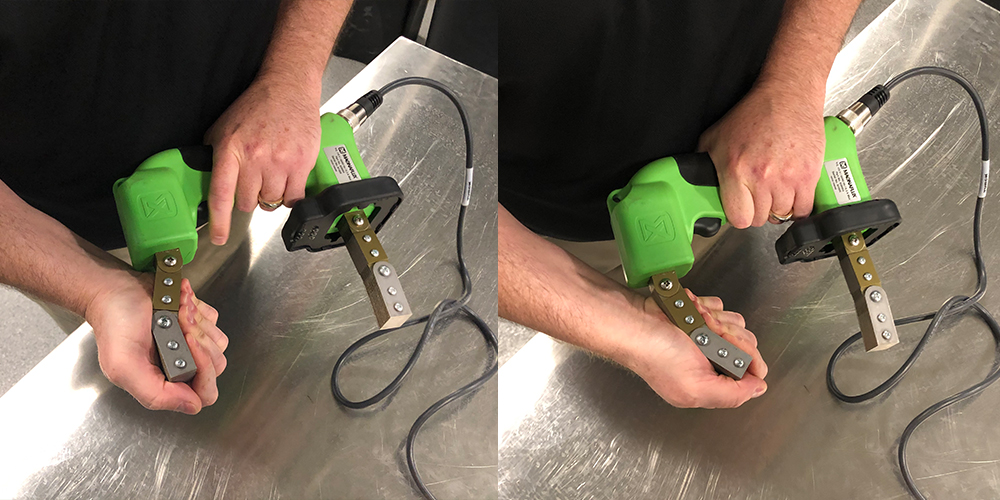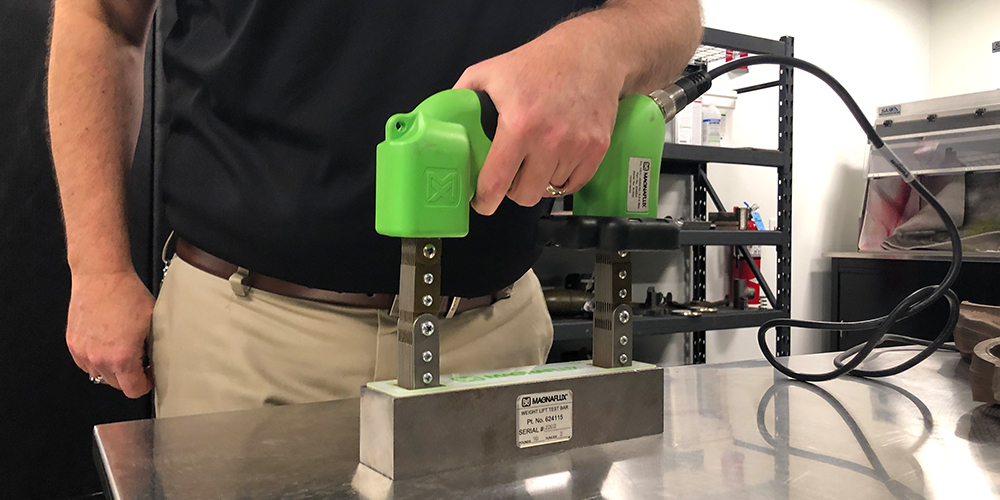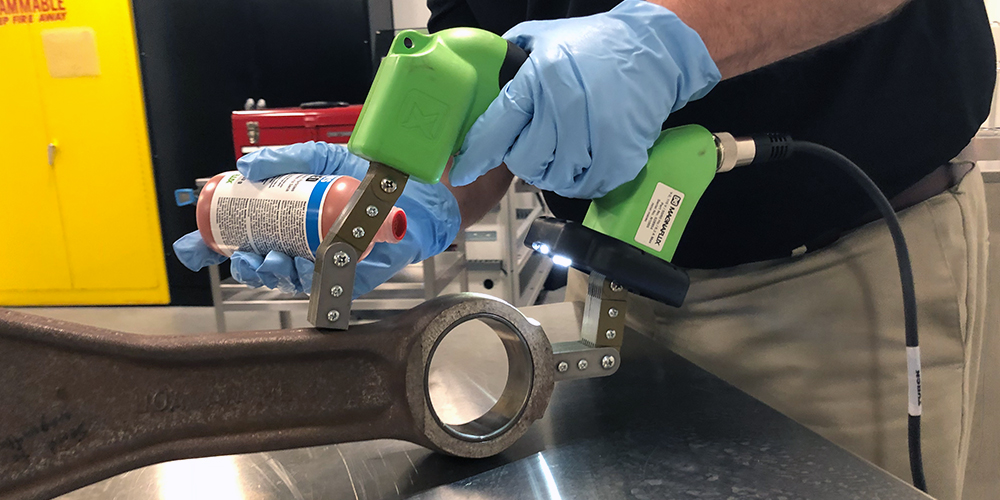Check the power cord and switch to make sure they're in good condition. Check that the legs can bend to conform to the inspection surface. Check the feet to make sure they can make even contact with the inspection surface. The more contact area, the better.

An AC yoke must lift 4.5 kg, and a DC yoke must lift 22.7 kg. Using just any piece of steel for the dead weight check can create a hazard for the operator; if the weight is not balanced it could slip off the yoke and drop. Calibrated test weights include alignment features to keep the weight balanced on the yoke, allowing you to perform the dead weight check safely.

The typical magnetic yoke has a 50% duty cycle with a maximum on time of 2 minutes. That means the yoke can be energized for up to 2 minutes continuously but would need to rest for the same amount of time afterward to prevent overheating. Exceeding the duty cycle can create a hazard for the operator and risk permanent damage to the yoke.

Yokes are powerful electromagnets, and they carry large inductive loads. If an AC/DC yoke is switched from AC mode to DC mode (or from DC to AC) while the yoke is turned on, the feedback of the inductive load could permanently damage the internal components. Use caution when performing both AC and DC inspections to avoid accidental damage.

The legs and feet of yokes are steel laminations, and magnetic particles can become trapped in the joints. To keep the yoke in good working order for future use, clean out any trapped particles or dirt before storage.

Subscribe to Magnaflux NDT Blogs:
Faraday Road, South Dorcan Industrial Estate
Swindon, Wiltshire, SN3 5HE, UK
Telephone: +44 (0)1793 524566
Contact Magnaflux Customer Service
Magnaflux, A Division of ITW Limited VAT number: GB 531 8325 59